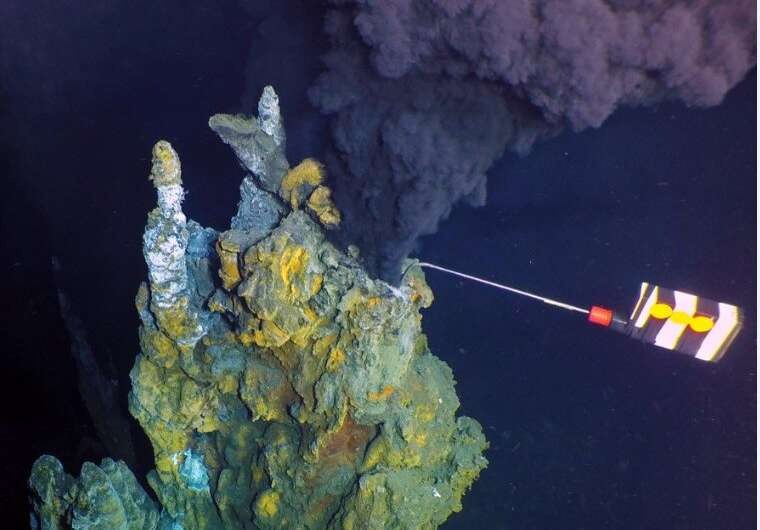Scientists have recently discovered the hottest and largest hydrothermal vent system ever located in the depths of the East Pacific ocean, according to a report by ScienceAlert.
Additionally, it is hundreds of meters from the axis of a volcanic ridge, a location where scientists didn't anticipate finding active vents, much less a system of them.
The revelation, according to scientists, might have a big impact on how we understand vent systems and how they fit into ocean ecosystems.

Mapping The Seafloor
It is worth noting that a group of scientists mapping the seafloor at depths too deep for human explorers used autonomous underwater vehicles to find the field.
The scientists discovered a zone of enormous spires up to three stories tall at depths of 2,560 meters (8,400 feet) below the surface, in the perpetually dark bathypelagic depths, using data from the Woods Hole Oceanographic Institution's AUV Sentry.
In addition to being extremely active, the field was also bigger and had a greater origin temperature than any other hydrothermal vent field that has been examined for 30 years in this area of the East Pacific Rise, according to WHOI marine geologist Daniel Fornari.
ScienceAlert noted that among the most interesting ecosystems on Earth can be found in hydrothermal vents. They are holes in the ocean floor where our planet's crust vents heat and chemicals, and they are typically linked to volcanic activity.
Even though the vent plumes can reach temperatures of over 400 degrees Celsius (750 degrees Fahrenheit), life nevertheless flourishes in these vents.
The majority of life on Earth depends on a photosynthetic food web, yet life differs in the bathypelagic depths. The chemicals left behind by the vents nourish a chemosynthesis-based food chain, which uses chemical reactions instead of sunlight to generate energy.
They play a crucial role in regulating the chemistry and temperature of the ocean as a whole by providing a transport mechanism from the interior of the planet. But since they are frequently discovered at depths that are not particularly favorable to humans, our knowledge of them is lacking.
How Did The Scientists Discover These Vents?
Using Sentry's sonar to create three-dimensional maps of the seafloor, a team led by chemical oceanographer Jill McDermott of Lehigh University sought to thoroughly explore the region to the west and east of the East Pacific Rise axial trough.
The crew discovered the pinnacles of a massive vent field, 750 meters east of the ridge axis and 5 to 7 kilometers north of the nearest known active on-axis vents.
Nine of the vents were sampled, and the results showed temperatures of 368 degrees Celsius, with materials present that suggested much higher origin temperatures, which has a minimum of 437 degrees Celsius for the iron-manganese ratio recorded.
Expanded study of the deep seabed may locate additional vent fields in previously undiscovered regions, adding to existing knowledge on how these ecosystems work.
Related Article ': Deepest Shipwreck Discovery': Explorers Find WW2 Navy Destroyer Below the Pacific
This article is owned by Tech Times
Written by Joaquin Victor Tacla
ⓒ 2025 TECHTIMES.com All rights reserved. Do not reproduce without permission.




